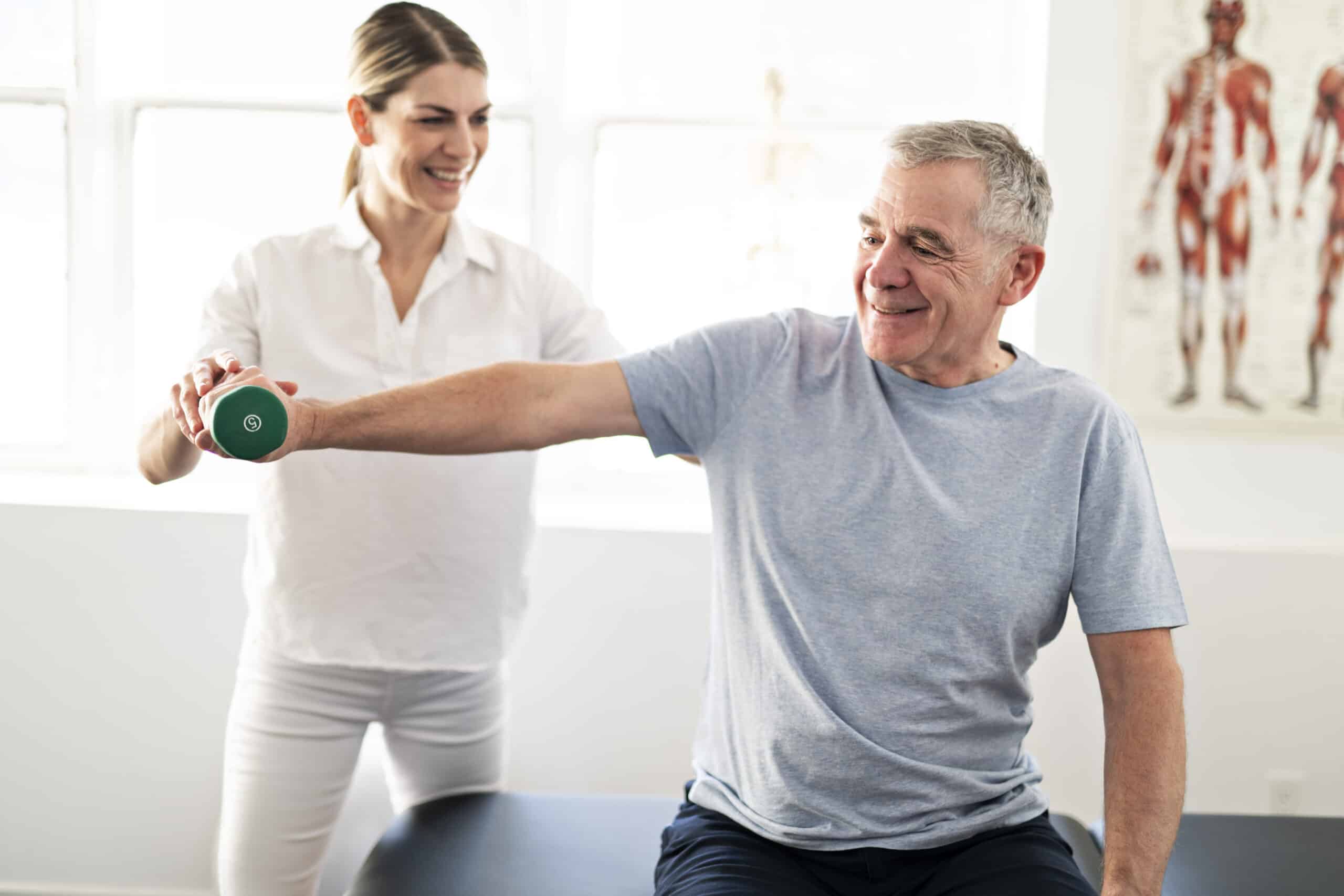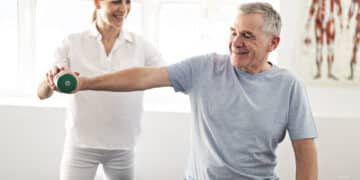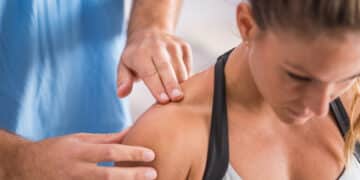Understanding the mechanisms and prevention of shoulder pain
What is shoulder pain and how does it develop?
Shoulder pain is one of the most common complaints of the musculoskeletal system and can be caused by various factors such as injury, overloading or age-related signs of wear and tear. One of the most common injuries in this context is the Shoulder dislocationalso known as a dislocated shoulder. In a shoulder dislocation, the humerus slips out of the glenoid cavity, which is usually accompanied by severe pain and a considerable restriction of mobility. Such an injury often requires immediate medical attention in order to reposition the arm correctly and prevent further damage.
Impigement syndrome and bursitis
Anatomy of the shoulder and the importance of the shoulder blade
The shoulder blade (scapula) plays a central role in the stability and mobility of the shoulder. It serves as the basis for several important muscles and tendons that stabilize and move the shoulder joint. Particularly worth mentioning is the Rotator cuffa group of four muscles that are essential for stabilizing the shoulder joint:
- Supraspinatus muscleThis muscle lies above the scapula and is responsible for lifting the arm.
- Infraspinatus muscleIt is located below the scapula and enables external rotation of the arm.
- Subscapularis muscleThis muscle is located on the front of the scapula and is responsible for the internal rotation of the arm.
- Teres Minor MuscleA smaller muscle that also supports external rotation.
Impigement syndrome and bursitis
A common problem with unstable shoulders is the Impingement syndrome. This disease causes a painful narrowing of the
of the tendons and bursae in the shoulder joint. This often particularly affects the Supraspinatus muscle. This muscle runs under the acromion and can easily become trapped if the shoulder blade is misaligned or the rotator cuff is weak. This entrapment leads to Bursitis (inflammation of the bursa)in which the bursa under the acromion becomes inflamed.
One inflamed shoulder bursa causes severe pain, especially when lifting the arm. This symptom often occurs when the supraspinatus muscle and the acromion compress the inflamed bursa. The pain can considerably restrict freedom of movement and get in the way of daily activities.
Why external rotation exercises should be avoided at the beginning
After a shoulder dislocation, it is important to perform exercises gradually and in a targeted manner. External rotation exercises in particular should be avoided in the initial phase. These exercises could further destabilize the shoulder and hinder the healing process. Instead, the focus should be on exercises that strengthen the stability and strength of the shoulder muscles.
Exercises to stabilize and strengthen the shoulder
The right choice of exercises is crucial for the successful rehabilitation and prevention of shoulder pain. Here are some recommended exercises and principles:
- Isometric exercisesThese exercises help to strengthen the shoulder muscles without putting too much strain on the joint. Examples include isometric contractions of the rotator cuff, in which the muscles are tensed but no movements are performed.
- Scapular retractionsThese exercises promote correct positioning of the shoulder blade and support the muscles. To do this, pull the shoulder blades together and hold the position for a few seconds before relaxing again.
- Guided movements: Under the guidance of a Physiotherapists exercises can be gradually integrated to improve both the mobility and strength of the shoulder muscles. These include light resistance exercises and controlled movement sequences that strengthen the muscles and at the same time ensure the stability of the joint.
- Self-massage and stretching exercisesThese can help to relieve tension and promote blood circulation. The rotator cuff muscles in particular benefit from gentle stretches and massages with the Trigger Point Therapy Ball.
Conclusion
Understanding the anatomy and mechanisms behind shoulder pain, such as the role of the rotator cuff and the importance of the scapula, is essential for effective prevention and treatment. After a shoulder dislocation, initially avoid stressful external rotation exercises and concentrate on gradually stabilizing the shoulder joint.
Our aim is to provide you with a firm foundation of knowledge and support you in your recovery through precise and professional care. Your well-being and recovery are always our priority, and we are here to guide you along the way. If you have any questions or require further information, please do not hesitate to contact us. Do not hesitate to contact us - or Book an appointment online. We are here for you.
Categories
- Osteoarthritis
- Leg
- Dry needling
- Elbow
- Foot
- Balance
- Hand
- Hip
- Pine
- Knee
- Headache
- Muscle pain
- Myofascial therapy
- Neck pain
- Physiotherapy Höngg
- Physiotherapy Wipkingen
- Physiotherapy Zurich
- Rehabilitation
- Back pain
- Shoulder arm
- Shoulder pain
- Pregnancy
- Dizziness
- Sports
- Trigger points
- Lower leg
- Injury prevention
- Wade
- What to do?
- Wound healing
Neck pain - holistic therapy with trigger point therapy and active exercises.
Neck pain? Get active and free yourself! Do you know the feeling of waking up in the morning and feeling like a robot?
Read moreShoulder pain: causes, treatment, exercises
What is shoulder pain and how does it develop? Shoulder pain is one of the most common complaints of the musculoskeletal system...
Read moreUnderstanding shoulder osteoarthritis - symptoms and therapies
What is shoulder osteoarthritis? The shoulder joint consists of the humeral head and the glenoid cavity, both covered with cartilage.
Read more




